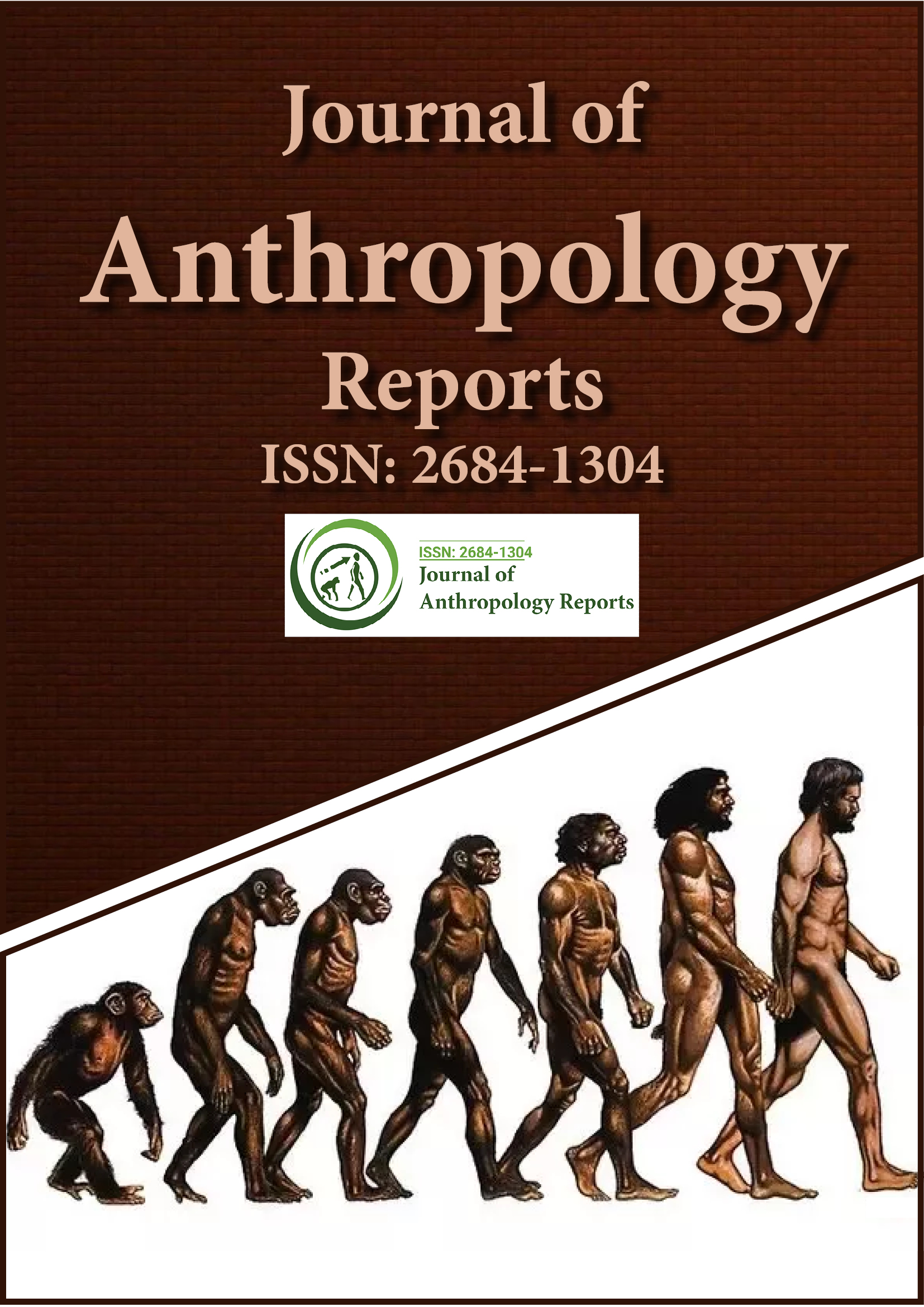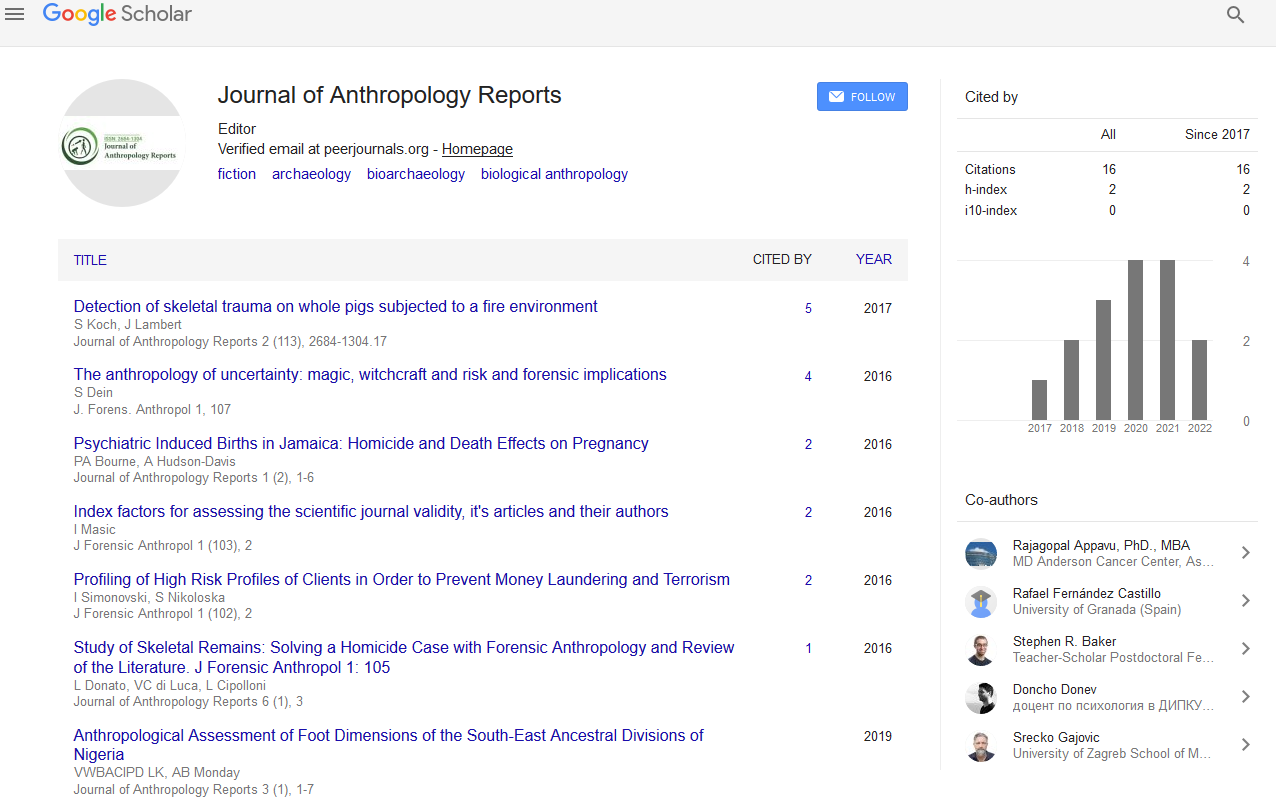Indexed In
- RefSeek
- Hamdard University
- EBSCO A-Z
Useful Links
Share This Page
Journal Flyer

Open Access Journals
- Agri and Aquaculture
- Biochemistry
- Bioinformatics & Systems Biology
- Business & Management
- Chemistry
- Clinical Sciences
- Engineering
- Food & Nutrition
- General Science
- Genetics & Molecular Biology
- Immunology & Microbiology
- Medical Sciences
- Neuroscience & Psychology
- Nursing & Health Care
- Pharmaceutical Sciences
Commentary - (2023) Volume 6, Issue 1
Impact of Various Factors on Allele Frequency within Population
David Frayer*Received: 02-Feb-2023, Manuscript No. JFA-23-19681; Editor assigned: 06-Feb-2023, Pre QC No. JFA-23-19681 (PQ); Reviewed: 21-Feb-2023, QC No. JFA-23-19681 (QC); Revised: 28-Feb-2023, Manuscript No. JFA-23-19681 (R); Published: 08-Mar-2023, DOI: 10.35248/2684-1304.23.6.147
Description
At the simplest level, evolution is the change in allele frequencies over time. Alleles are a set of DNA variants known as genes inherited from a parent. Allele frequencies within a population can vary based on four factors: Mutation, natural selection, random genetic drift, gene flow. Errors can occur when DNA is copied from the parent strand to her two daughter strands. It is these replication errors or mutations that are ultimately responsible for all variations affected by the other three forces of evolution. If a mutation occurs in gametes or sex cells, it can be passed on to future generations. The ultimate fate of such mutations is either erasure, where they disappear completely from the gene pool, or fixation, which replaces all other variants in the gene pool. Genetic drift, gene flow, and/or selection are the forces that produce these alternative outcomes. Both genetic drift and gene flow randomly alter allele frequencies. Genetic drift is the random variation in allele frequencies between generations caused by mating in a finite population, which can increase or decrease in frequency. Allele frequencies fluctuate up and down across generations until the genetic variant becomes extinct or becomes fixed. Gene flow is the change in allele frequencies when migrants from another population are added to the population.
Natural selection, on the other hand, is deterministic. Mutations in protein-coding or RNA genes can affect the function of the gene product. Modifications are ineffective and may be harmful or of little benefit to the organism. Mutations evolve neutrally by genetic drift when changes have no effect. If a change is adverse or beneficial, it evolves by natural selection. Favorable mutations increase in frequency and replace less suitable variants. Deleterious mutations become less frequent and disappear.
When a mutation causes two DNA sequences to differ, it is called a substitution. Substitutions record the evolutionary history of genes. Substitutions shared by individuals indicate that those individuals share common ancestry with the person in whom the original mutation occurred. We also show that those who share a substitution are more likely to be closely related than those who do not have a substitution in that particular gene, i.e. they shared a recent ancestry. By tracking patterns of shared substitutions, geneticists can reconstruct phylogenetic relationships (evolutionary trees) between samples of organisms.
Deriving evolutionary relationships through common patterns of substitution is called cladistics. However, not all shared proxies are treated equally. In cladistics, permutations are classified as uniquely derived (autopomorphy), jointly derived (sinapomorphy), and parallel or convergently derived (homoplasty). Autapomorphies are permutations that are unique to a single taxon (or unit of study) and are derived (that is, have undergone some mutation) in relation to the ancestral state of the character. Automorphism is not useful for divergence analysis because unique features do not provide information about common ancestry. Synapomorphies are permutations shared by two or more taxa derived in relation to a character's ancestral state. Synaptic morphology is the only type of permutation useful for divergence analysis, as it provides evidence of recent common ancestry. Homoplasia, on the other hand, is the bane of crud analysis. Homoplasia is an independently derived permutation that two or more taxa have in common. Homoplasy is the result of parallel or convergent evolution, resulting in traits that appear similar or identical not because of a recent common ancestor, but because the character states evolved independently multiple times. Homoplasy makes distantly related taxa appear closely related. The final class of symbols is the symplesiomorphy.
Conclusion
These are signs of common ancestry and provide only evidence of common ancestry in antiquity. These are exciting times for anthropological genetics. The amount of DNA sequencing data currently available is staggering, and new data is being generated at an alarming rate. Next-generation sequencing technology allows a single researcher to create in an afternoon what previously took multiple laboratories and many technicians’ years to create.
Citation: Frayer D (2023) Impact of Various Factors on Allele Frequency within Population. J Anthropol Rep. 6:147.
Copyright: © 2023 Frayer D. This is an open-access article distributed under the terms of the Creative Commons Attribution License, which permits unrestricted use, distribution, and reproduction in any medium, provided the original author and source are credited.

